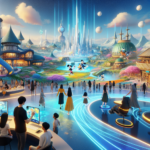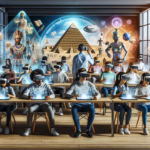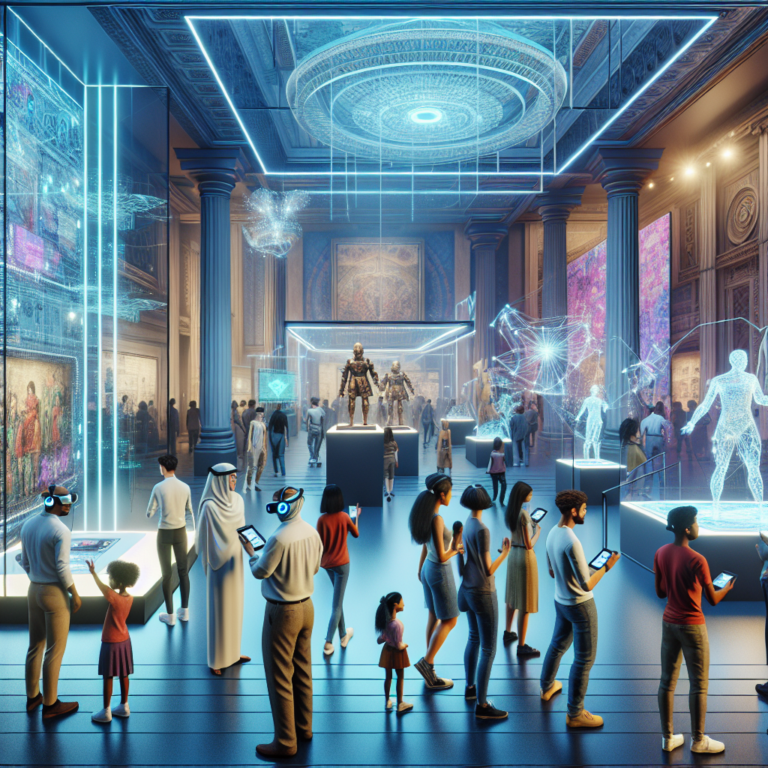The Evolution of Museums: Embracing Immersive Technologies for Cultural Preservation
Introduction: A New Era of Cultural Engagement
As we step into the future, museums increasingly embrace a transformative wave of immersive technologies, which in turn reshapes how we experience culture and history. No longer are the days of passive observation; instead, today’s visitors are becoming active participants in their cultural journeys. Whether through virtual reality or augmented reality, immersive technologies are at the forefront of preserving our shared heritage, thereby making it more accessible and engaging for everyone. 🌍
The Role of Immersive Technologies in Museums
Museums have long been custodians of our collective memory, showcasing artifacts and artworks that tell the story of human civilization. However, the advent of immersive technologies has introduced new dimensions to this role:
- Virtual Reality (VR): This groundbreaking technology allows visitors to transport themselves to different times and places, offering an unparalleled experience of historical events or ancient civilizations.
- Augmented Reality (AR): By overlaying digital information onto the physical world, AR enhances exhibitions by providing additional context and interactive elements, promoting a deeper understanding of artifacts.
- 360-Degree Experiences: These immersive environments allow users to explore entire spaces from the comfort of their own homes, creating opportunities for those unable to visit museums in person.
- Holography: Holograms can bring historical figures to life, allowing audiences to engage in interactive dialogues with renowned artists, scientists, or cultural icons.
Why Immersive Technologies Matter
Adopting these innovative technologies isn’t merely about keeping up with trends; it’s about the incredible benefits they offer for cultural preservation, education, and visitor engagement:
1. Enhanced Visitor Engagement
Immersive technologies offer captivating experiences that engage users in ways traditional exhibitions often cannot. For instance, by allowing visitors to step into the shoes of individuals from the past or interact with lifelike depictions of historical events, museums can thus transform learning into an adventure🏰
2. Greater Accessibility
Geographical and physical barriers often limit access to museum collections. With the integration of VR and AR, people from all walks of life can explore exhibits from anywhere in the world. This democratization of culture not only empowers underrepresented communities but also fosters a sense of global connectedness.
3. Preserving Cultural Heritage
As natural disasters and urban development threaten historical sites and artifacts, immersive technologies can help preserve our cultural heritage digitally. Through detailed 3D models and virtual reconstructions, we can retain the essence of these treasures for future generations.
Real-World Applications of Immersive Technologies
Across the globe, numerous museums are pioneering the use of immersive technologies to enrich the visitor experience:
The British Museum and its VR Tours
The British Museum, for instance, has embraced virtual reality to offer guided tours of its vast collections. Visitors can explore the Rosetta Stone or wander through the Egyptian Sculpture Gallery as if they were actually there, all from the convenience of their home. 🏺
Smithsonian’s AR Integration
The Smithsonian has taken a bold step forward with augmented reality by introducing an AR app that allows visitors to see artifacts come to life with animated stories, historical contexts, and in-depth analyses right on their smartphones. 📱
Le Petit Palais’s Holographic Guides
In Paris, Le Petit Palais has incorporated holograms into its exhibitions, enabling visitors to hear narratives directly from the perspectives of historical figures depicted in their artwork. This brings a personal touch to the experience, creating a bond between the visitor and history.
Challenges and Considerations
While the prospects of immersive technologies in museums are thrilling, there are challenges to consider:
- Cost of Implementation: While many museums see the potential benefits, the high costs associated with developing and maintaining immersive technology can be a significant barrier for smaller institutions.
- Technological Literacy: Not all visitors are familiar with the technology involved, which may lead to disparities in experiences. Educational programs or intuitive design must accompany these technologies to ensure everyone can benefit.
- Preservation of Authenticity: Balancing the immersive experience with respect for the authenticity of the artifacts is crucial. The representation of history should be accurate and informative, not merely entertaining.
Looking Ahead: The Future of Museums
The future is bright for museums willing to embrace innovative solutions. The convergence of art, technology, and history offers endless possibilities for enhanced cultural preservation. As technology continues to evolve, so too will the ways in which we engage with our shared heritage.
The Importance of Collaboration
To fully realize the potential of immersive technologies, collaboration between cultural institutions, tech companies, and communities will be essential. By sharing knowledge and resources, we can develop immersive solutions that prioritize inclusivity and accessibility while preserving the essence of culture.
Conclusion: Embrace the Future of Cultural Experiences
Immersive technologies are redefining the museum landscape, breathing new life into the cultural sector and enriching the way we share and preserve our history. As we enter this exciting new chapter, let us embrace the creativity and innovation that will ensure future generations can experience, learn from, and appreciate the richness of our cultural heritage. 💫




0 Comments